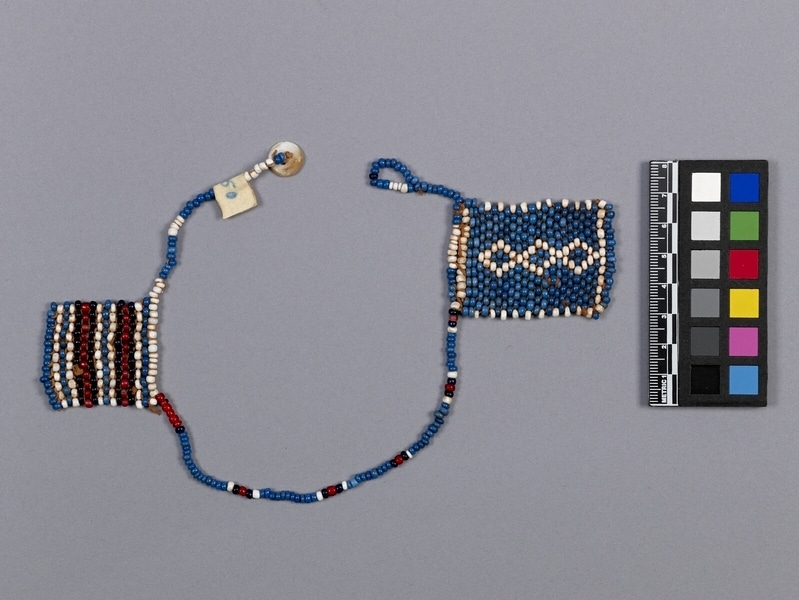Necklace Item Number: K5.50 from the MOA: University of British Columbia

Description
Single strand of blue, red, black and white beads connecting two rectangular panels. One of the panels is blue, has three connecting diamond shapes down the middle and is framed in white and blue beads. The other panel consists of rows of white, black, red, and blue beads. There is a blue beaded loop at one end and a white button at the other that fit together to secure the necklace.
History Of Use
Amatikiti necklaces are named for the panels, or “tickets” (amatikiti), that were given to people in South Nguni who were loyal to the crown during the Frontier War of 1878. Since then, panels have been affixed to these necklaces, made by women, to relay messages or love letters to its wearer from the maker; often gifts from a man's fiancee or wife.
Narrative
Bead colours, types, button (mother of pearl?), red ochre, and patterns suggest a South Nguni origin. South Nguni is a linguistic classification that includes : Xhosa, Mfengu, Mpondo, Mpondomise, Hlubi, Bhaca, Bomvana and Thembu people.
Iconographic Meaning
Colour, arrangement, and location of beads on these types of necklaces convey different messages; the specifics of it are known only to the couple.
The general meaning of diamonds is protection, especially from one's family. Based on the design and colours, the owner of the necklace likely had a wife and two children.
Item History
- Made in South Africa
- Collected during 1940
- Owned by Union College before July 1960
- Received from Union College (Donor) during July 1960
What
Who
- Culture
- Xhosa
- Previous Owner
- Union College
- Received from
- Union College (Donor)
Where
- Holding Institution
- MOA: University of British Columbia
- Made in
- South Africa
When
- Collection Date
- during 1940
- Ownership Date
- before July 1960
- Acquisition Date
- during July 1960
Other
- Item Classes
- beadwork
- Condition
- good
- Current Location
- Case 102
- Accession Number
- 0025/0084